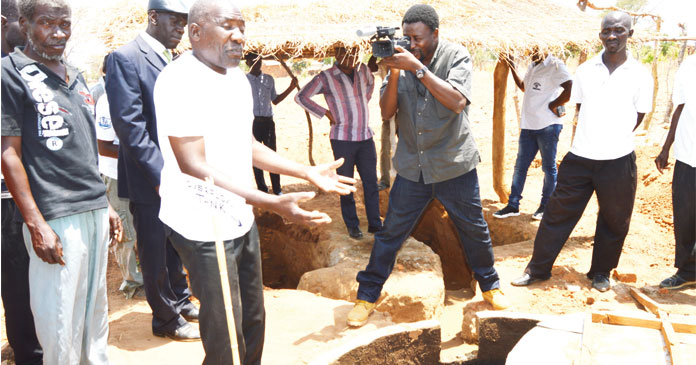
Charcoal and firewood have been the main source of energy of rural and some urban areas in the country for ages. Now, clean sources of energy that are cost-effective and affordable are coming out handy.
Still, there are some people who are stuck with unsustainable and destructive energy sources which contribute significantly to climate change.
Mervin Kumwenda from Bongololo Village, Bolero, Rumphi District, is one of those bent at rewriting the energy script by opting for biogas technology which is clean.
“Biogas technology has helped us a lot. In the past, I used to cook using firewood and it was not easy to fetch it. Even the smoke produced when cooking led to bad coughs. With biogas, the cooking pots are always clean,” Kumwenda states.
She has steadily watched spots whose green cover was depleted wear the verdant vegetation again as the remaining saplings steadily rise into giants.
Her return to the regenerating plots is only to tender them and marvel at a job that is being well done.
“I urge fellow livestock farmers to embrace this technology. Once you install the biogas plant, you can use it even for 50 years and, in the process, you save a lot of money. Our children and grandchildren will use this same equipment,” Kumwenda recounts.
Apart from the gas, she harvests manure from the same biogas plant which she uses in her crop fields and sells the surplus.
Another farmer, Alick Msowoya, from Jodi Village, Traditional Authority Chikulamayembe, in Rumphi, brags that life has not been the same since the coming of the initiative supported by Capacity Building for Managing Climate Change (Cabmacc) Project.
“I had very little knowledge on how to treat our livestock in terms of diseases. We just kept the animals for lobola and prestige. I now have knowledge on livestock management,” Msowoya explains.
He adds that some of the resources for the construction of the biogas plant were provided by Trustees of Agricultural Promotion Programme (Tapp) with support from.
“My life has changed with this biogas technology. I used to cover long distances to fetch firewood but, this time, I just go to the kitchen, light up a match and start cooking. Most farmers are in awe of the technology and want to adopt it,” Msowoya says.
Chief Principal Kawazamawe from Bolero describes the project as a timely intervention at a time livestock was being ravaged by diseases.
He reckons that many more people in the area are willing to have their own biogas plants but fail due to financial challenges.
“We appreciate the coming of the technology. A lot of deforestation has taken place in this area and, now that we have this technology, we are conserving the environment,” he says.
Winfred Chanza, who is programmes manager at Tapp, which is implementing the project in partnership with the Department of Agricultural Research Services, says biogas technology was identified as one of the tools for improving community-based resilience among livestock farmers in Rumphi District.
The aim was to improve food security and climate change adaptation.
“We are implementing this project which is looking at climate change, its effects and providing solutions to the effects and one of the solutions is the use of biogas for livestock farmers’ inured to curb wanton cutting down of trees,” Chanza says.
He adds: “Our wish is that we should reach out to as many farmers as possible though there is some cost attached to it because farmers have to contribute sand, bricks and quarry stones while we provided cement, reinforcement structures, pipes and stoves.”
Apparently, 90 percent of women in Bolero are saying they wish to have the technology.
“We looked at the problems that were there and one of them was poor housing of cattle. As such, we introduced the standard kraal which led to biogas technology,” he says.
He adds that, through support from Cabmacc, they trained other farmers in all project districts.
Now, the challenge has been placed in the hands of farmers, most of whom have experienced the effects of climate change.
(Source: The Daily Times, Thursday, January 31, 2019)
